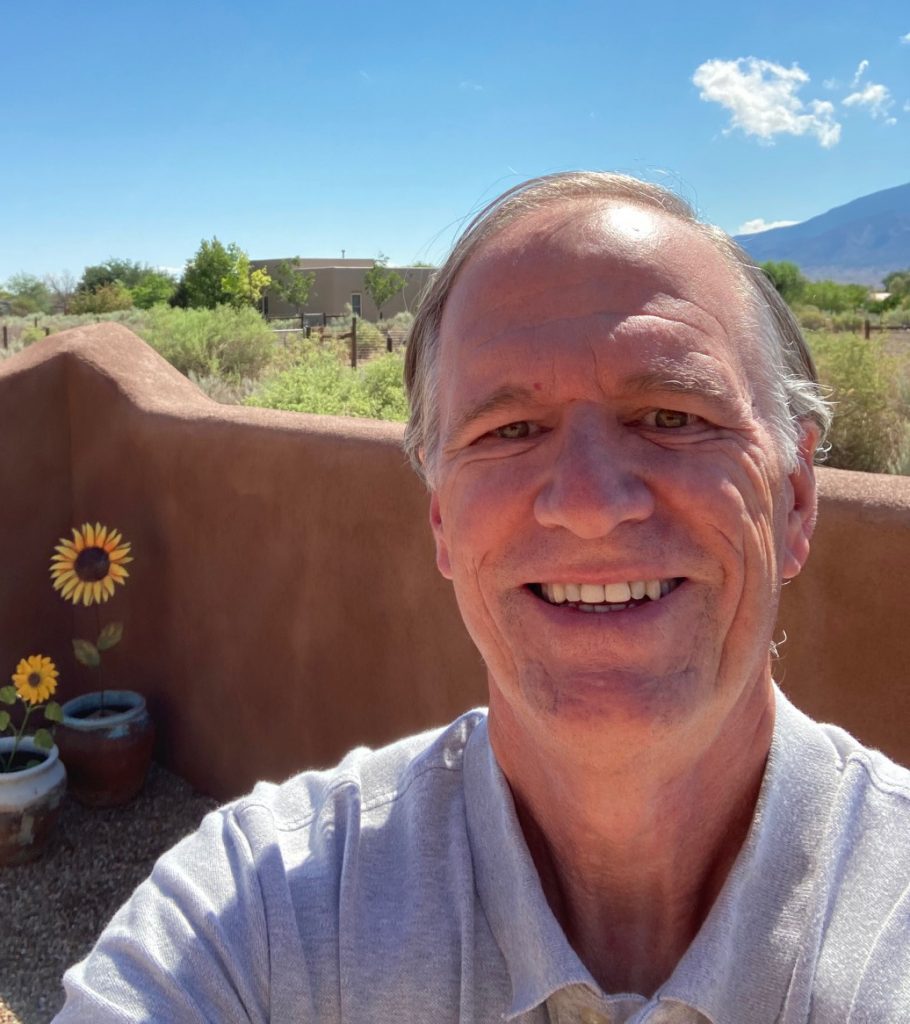
“When my MFA program ended in January 2020, I realized that I needed to focus on maintaining a connection to the world of writers and writing . . .”
Tell us a little bit about yourself. Where are you from and what do you do when you’re not reading for NER?
I grew up in the New York City suburbs and have lived in Northern California and in the DC area. I currently live in New Mexico. When I am not reading for NER, I write short stories, read books and magazines, and listen to all kinds of music. I am also relearning to play the piano after many years away from it. I am a fan of jazz pianist Bill Evans and I recently mastered a simple arrangement of “My Foolish Heart” with the help of a high school friend who is a professional piano player. He videotaped his hands on his keyboard as he played the song and then sent me the video so I could copy what his fingers were doing.
What made you decide to be a reader for NER?
I started as a reader for NER in April 2020. One of my favorite MFA program mentors suggested that I apply and I am very glad that I was accepted. When my MFA program ended in January 2020, I realized that I needed to focus on maintaining a connection to the world of writers and writing. Being a fiction reader for NER has been an important part of that effort.
Have you ever read a submission that later got selected for publication?
Sindya Bhanoo’s wonderful story “No. 16 Model House Road” (NER 41.4) was among the submissions assigned to me in September 2020. I had a strong feeling that this story might be one that would make it into an issue of NER. So I gave it a YES vote and the senior editors agreed. It was exciting to come upon such a great story during my first year as a reader, and this story remains my favorite of all the stories I have read for the magazine.
What is your reading process like? What do you look for in a submission?
My process involves reading through each of the stories assigned to me each month over the period of about a week or ten days. I take notes on a pad (a habit from 20 plus years as a lawyer) as I read each story and try to determine which of the stories are possible YES and MAYBE stories. Then I go back and read these stories again to figure out if any of the MAYBEs could be a YES story. After I have submitted my votes, I make sure to read the editors’ notes on the stories. I always learn something by doing this. Fiction editor Ernest McLeod and I e-mail each other often and he is always very helpful and friendly.
How has reading for NER influenced your own writing/creative pursuits?
I think it has taught me that rejections are just part of the writing/publishing process. Magazines and journals have a limited amount of space in each issue, so writers have to understand that for every acceptance we are lucky enough to get, we will also receive many rejections.
What do you read for pleasure? Is there something you’re reading now that you would recommend?
Lately I have learned a lot from reading Simon Baker’s book on Ancient Rome and Walter Isaacson’s biography of Leonardo da Vinci. I am now reading Amos Oz’s inspiring memoir A Tale of Love and Darkness. As for fiction, I always enjoy reading (and heartily recommend) any collection of Italo Calvino stories and any collection of Lauren Groff stories.
Our staff readers, all volunteers, play an essential role in our editorial process and in our mission to discover new voices in contemporary literature. A full list of staff readers is available on our masthead.
Sounds like you are doing coolio stuff, Mr. Verdi!!